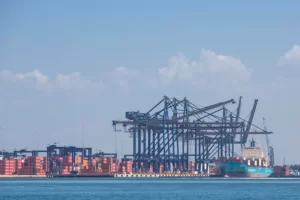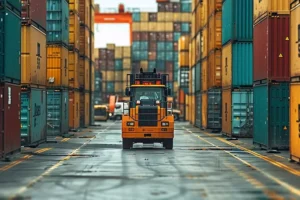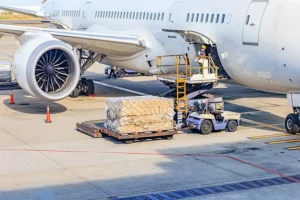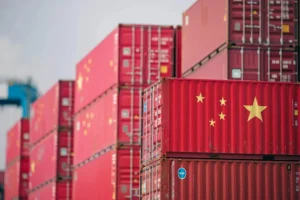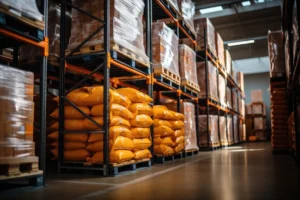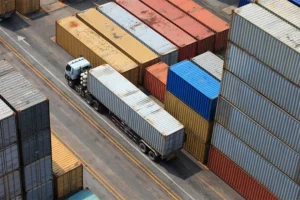Goods clearance
What is clearance of goods?
In this article, we intend to discuss the concept of clearance of goods and its effectiveness in the administrative and financial process under the laws and regulations of the Islamic Republic of Iran.
Clearance of goods is a process in customs that is carried out by the owner of the goods or the legal representative of the owner of the goods (Article 1, Clause B of the Customs Affairs Law approved in 1390 by the Islamic Consultative Assembly) at customs for the export and import of goods, during which the goods are exported by completing customs formalities related to customs facilities. Of course, we must note that if the clearance hierarchy is not followed correctly, your goods will be considered smuggled and will result in financial loss and loss of your reputation.
First of all, it is better to get acquainted with the concept of the word forwarding in the clearance of goods section. Forwarding or transportation of goods is a process in which a company or representative takes responsibility for organizing the transportation of goods from origin to destination. These services can include managing and coordinating all logistical steps along the way. Forwarding companies play an important role in international trade as intermediaries between buyers and sellers.
Goods clearance hierarchy
The goods clearance hierarchy consists of:
- Registration of declaration
- Receipt of quota (authentication)
- Control and evaluation of goods
- Obtaining a license
- Tariff review
Customs Clearance Terms
Now, in the customs clearance section, we have terms that we can get to know better to improve our performance in the commercial sector because sometimes familiarity with these related terms can help us facilitate the customs clearance process.
Customs Documents
A set of documents required for customs clearance. These documents may include a commercial invoice, packing list, bill of lading, certificate of origin, and import permits.
Imports
Goods that are imported from one country to another. These goods are subject to the customs laws and regulations of the destination country.
Exports
Goods that are sent from the country of origin to another destination. These goods must also go through the legal and customs processes of the country of origin and destination.
Customs Duty
Taxes imposed on imported goods. These duties are usually calculated based on the value of the goods (customs value) and may vary depending on the type and type of goods.
Customs Value
The calculated value of the goods based on the commercial invoice used to calculate customs duties. This value usually includes the price of the goods, the cost of transportation and insurance.
Customs Exemption
The conditions under which certain goods are exempt from paying customs duties. These exemptions can be based on the type of goods, volume, destination, or certain conditions.
Temporary Importation
Temporary importation of goods into a country for specific purposes (such as exhibitions or repairs) that are temporarily exempt from paying duties. These goods must be returned to the country of origin after a certain period.
Permanent Importation
Permanent importation of goods in which the goods remain in the destination country after paying all duties and taxes.
E-Customs
Systems that are used online and digitally to facilitate customs processes and exchange information. These systems speed up the clearance process and reduce administrative problems.
Bill of Lading
A document issued by the carrier (transport company) that indicates the ownership of the goods and the conditions of their transportation. The bill of lading is used as a document of ownership of the goods when delivered to customs or the destination.
Commercial Invoice
An important document that shows the specifications of the goods (quantity, type, price) and the financial details of the purchase transaction. This invoice is presented to customs for the calculation of duties and customs value of the goods.
Packing List
This document shows the exact details of how the goods are packed, the number of packages, the weight, and other necessary information about the packages. The packing list is used to facilitate the customs clearance and inspection process.
Certificate of Origin
A document that confirms in which country the goods were manufactured. This certificate is important for determining the number of customs duties and compliance with international trade laws.
Customs Account
An account used to record financial information and customs clearance of goods. This account is essential to ensure that duties and taxes are paid correctly.
HS Code (Harmonized System Code)
An international coding system for identifying types of goods that helps customs determine the appropriate duties and taxes for the goods. These codes help to accurately identify the goods during the customs process.
Import Process
The overall process by which goods are imported from the country of origin to the destination, and in this process, customs, various inspections, and financial settlements are carried out.
Certificate of Compliance
A document that shows that a product complies with the safety and quality standards of the country of destination. This certificate is required for certain goods (such as pharmaceutical products or electrical equipment).


